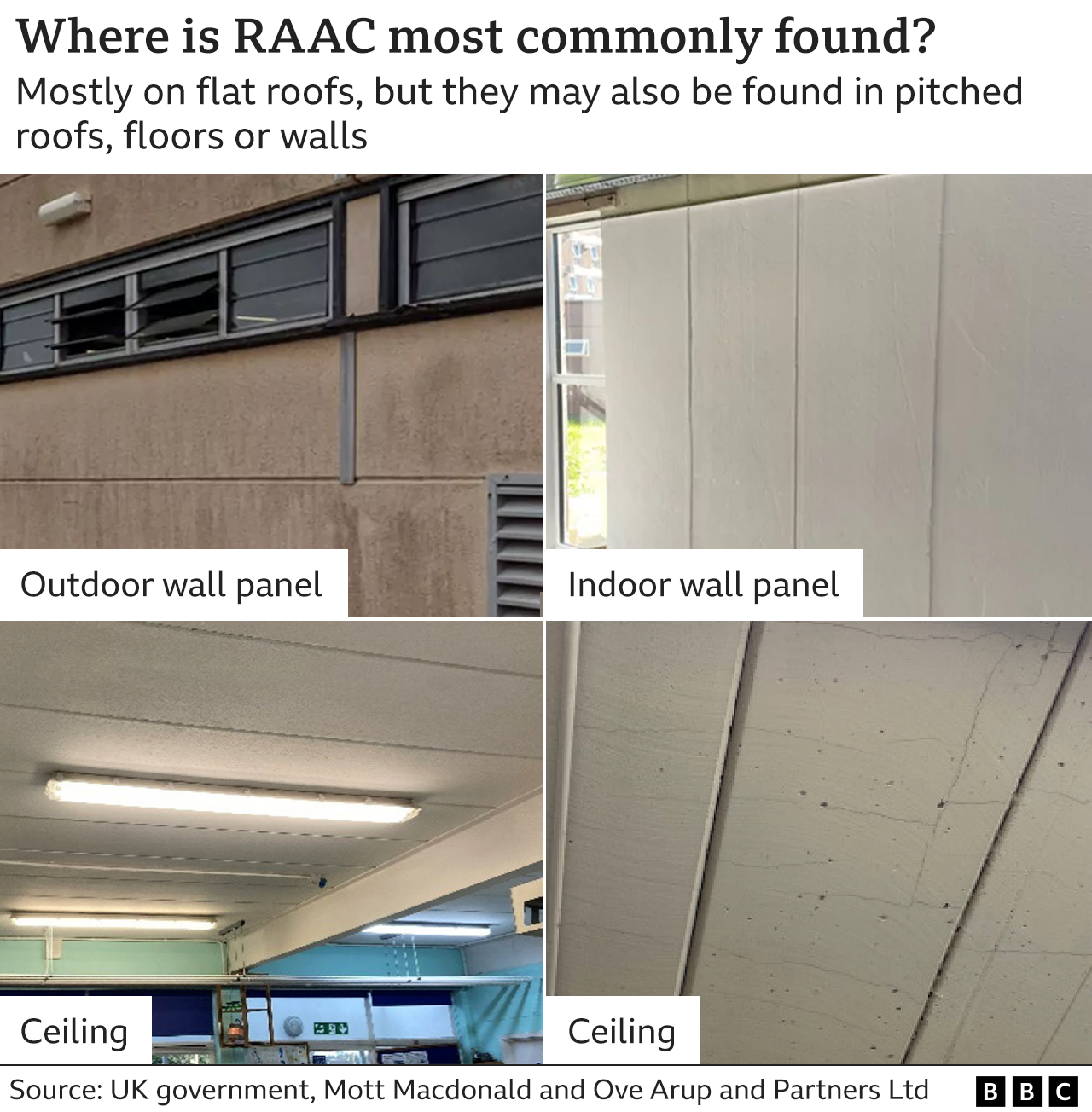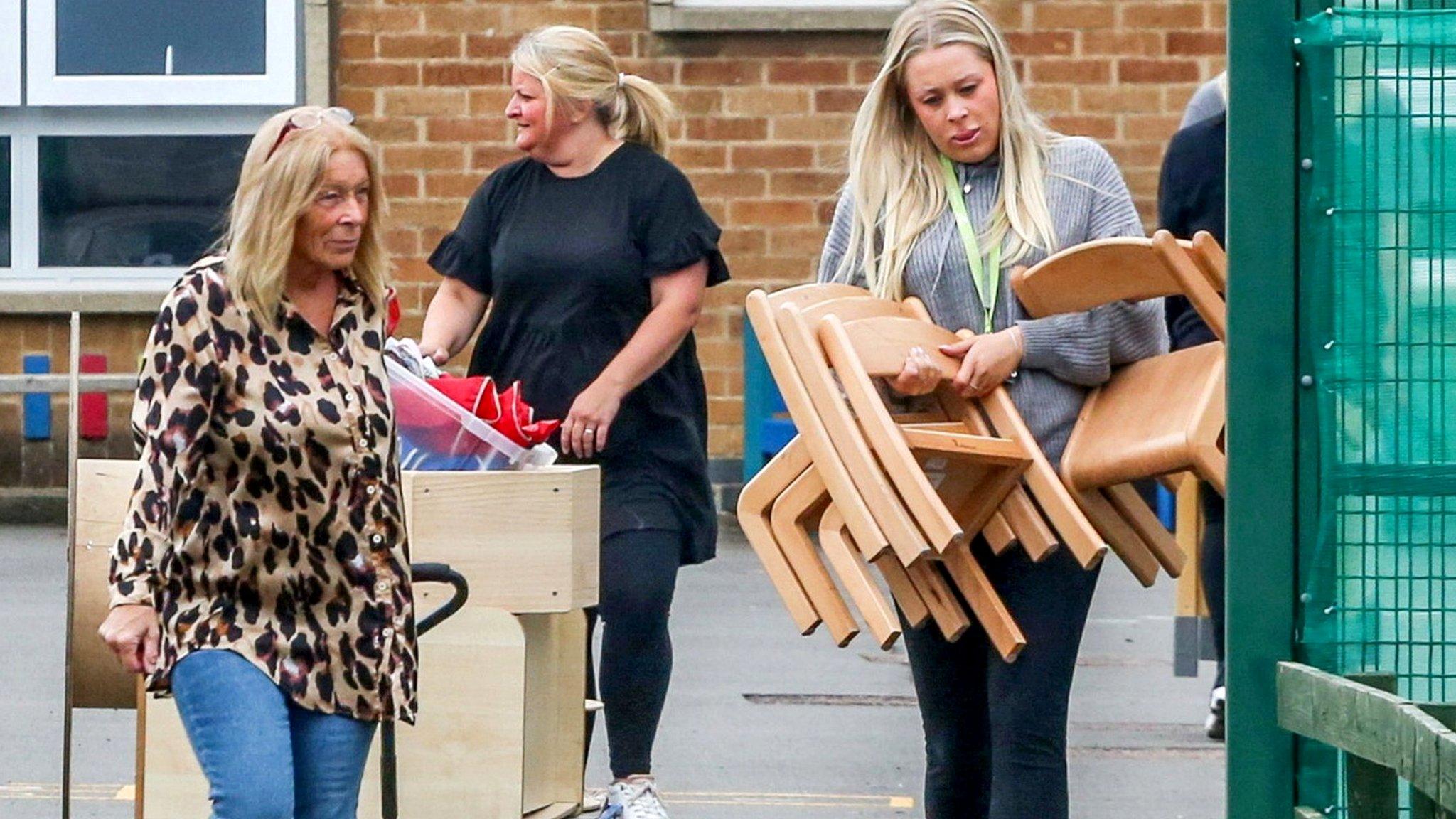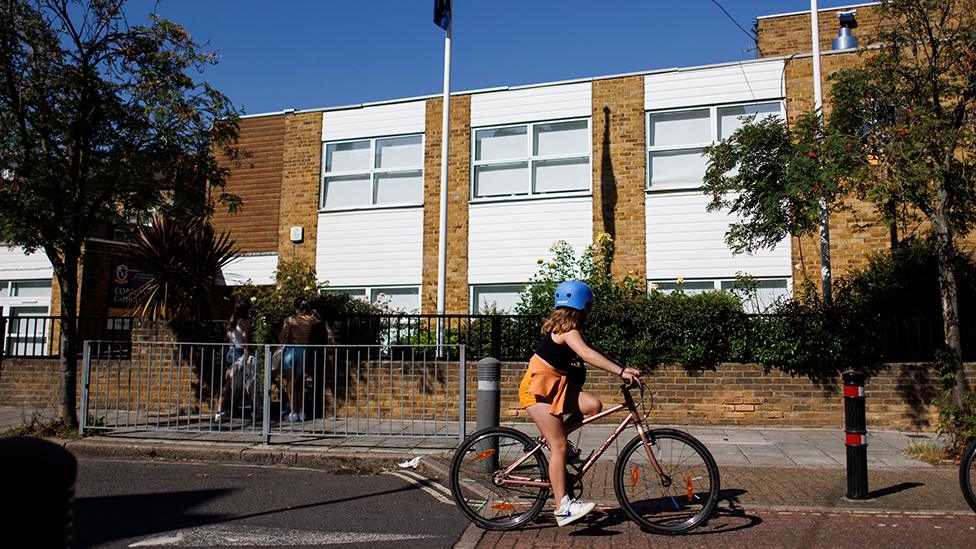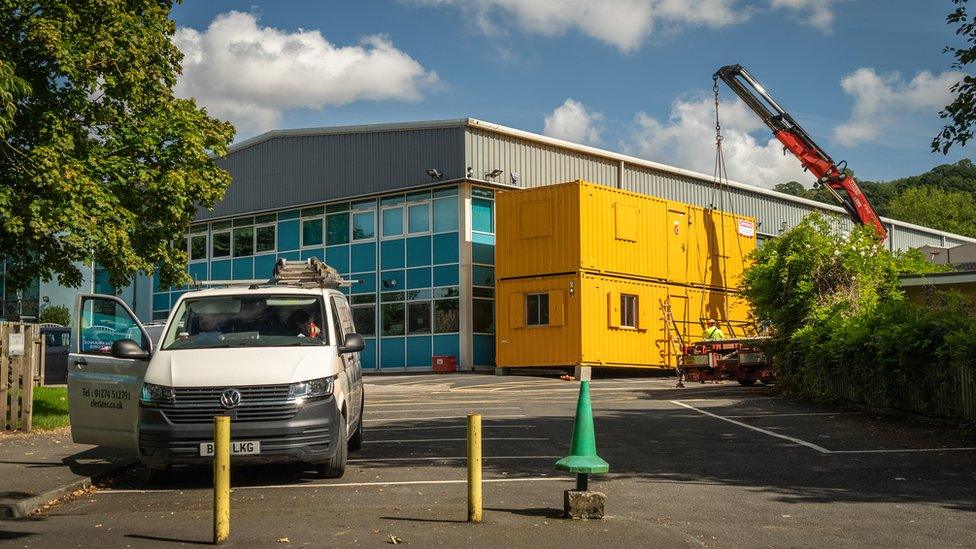RAAC: Structural checks on NI schools over concrete concerns
- Published

Schools in Northern Ireland are being checked for collapse-prone concrete as a matter of urgency, according to the Department of Education (DE).
More than a hundred schools in England have been ordered to close just before the start of term, over reinforced autoclaved aerated concrete (RAAC).
In a letter to principals on Friday, DE said it had liaised with the colleagues in England.
RAAC, was used in construction between the 1950s and the 1990s.
The department said it had commissioned the Education Authority (EA) to "carry out structural surveys to ascertain the scope and scale of RAAC presence in schools in Northern Ireland."
It added: "Please be assured the safety of pupils and staff are the utmost priority for the department".
The teachers' union NASUWT has asked the DE for this matter to be dealt with as soon as possible.
Matter of urgency
The union has written to Northern Ireland's permanent education secretary expressing concerns that similar problems could affect schools across Northern Ireland and asking for checks.
The DE said in a statement that they have commissioned the Education Authority (EA) to carry out structural surveys to see if RAAC is present in Northern Ireland schools.
The department added: "This work is being taken forward as a matter of urgency to ensure that any necessary mitigations are put in place promptly."
It is not yet clear how long this will take.
The EA said it will contact schools as work progresses.
What is happening elsewhere?

Schools in England found with buildings containing reinforced autoclaved aerated concrete (RAAC) have been told they must introduce safety measures, which could include propping up ceilings.
A "minority" will need to "either fully or partially relocate" to alternative accommodation while those measures are installed, the English Department for Education (DfE) has said.
But the DfE has not given a timeline for replacing the material, which was used until the mid-90s.
The risk of injury or death from a school building collapse was said to be "very likely and critical" by the watchdog the National Audit Office (NAO) in June, after it highlighted concerns for school buildings that still contained RAAC.
This lightweight "bubbly" form of concrete is usually found in the form of panels on flat roofs, as well as occasionally in pitched roofs, floors and walls. It has a lifespan of around 30 years and most buildings using it will be coming to the end of their lifespan
While the vast majority of schools and colleges will be unaffected by this announcement, the NAO report identified 572 schools where this concrete might be present.
There are 156 settings in England with confirmed RAAC, according to DfE data. Of those, 52 already had safety mitigations in place, and 104 were being contacted this week about getting them in place.
Related topics
- Published31 August 2023

- Published13 February 2024

- Published1 September 2023
